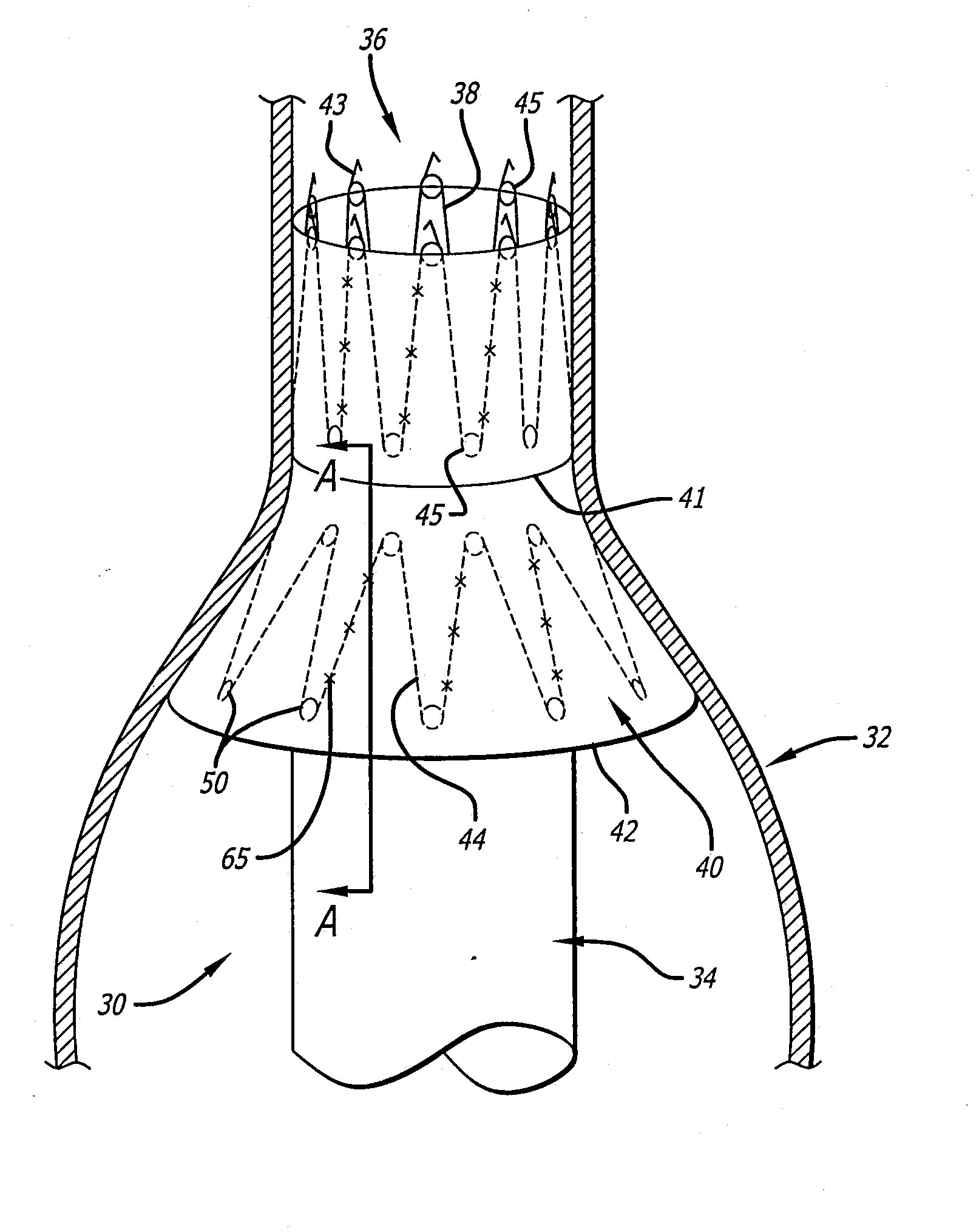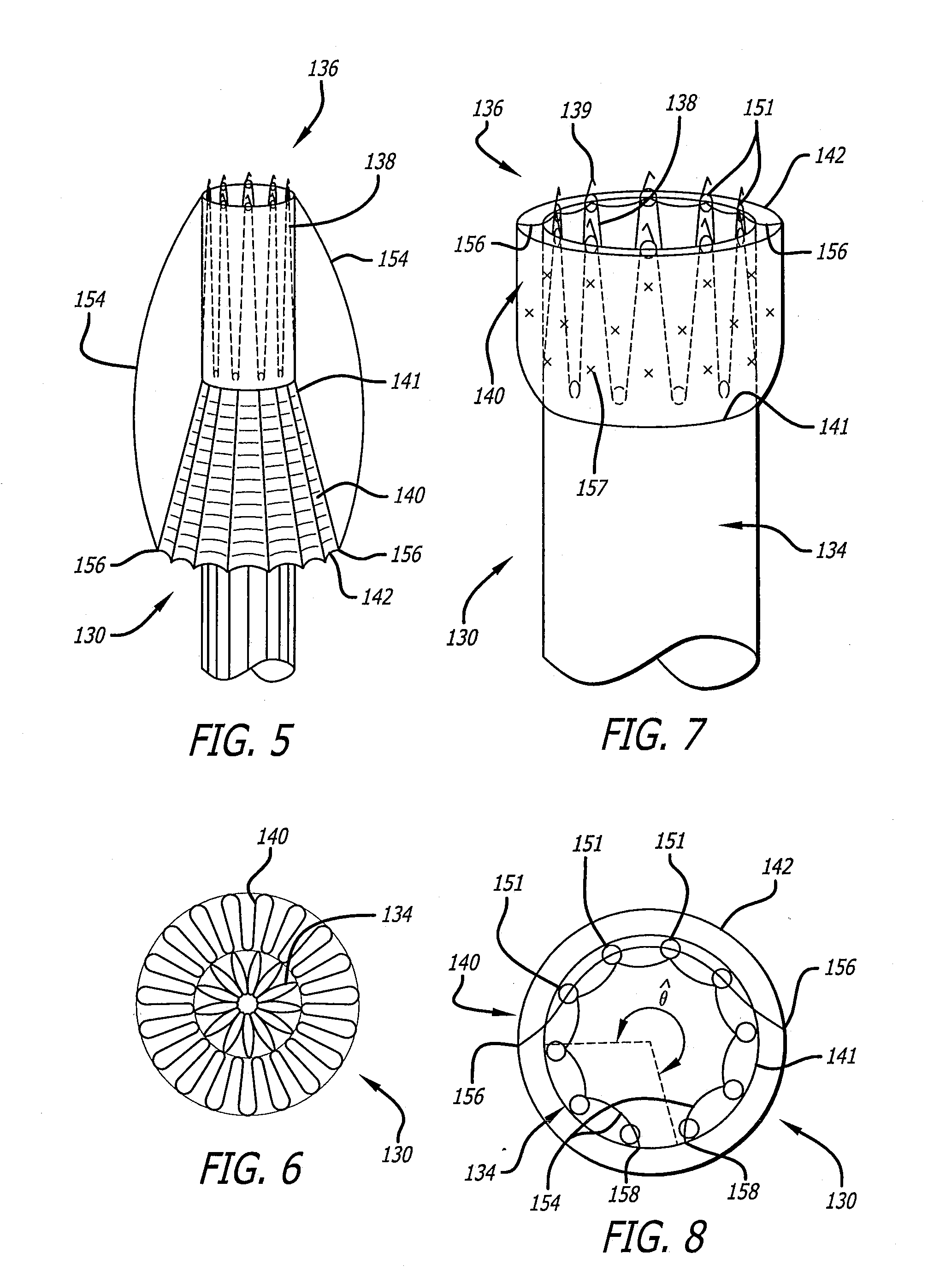Endovascular graft for providing a seal with vasculature
a vasculature and endovascular technology, applied in the field of medical devices, can solve the problems of increasing the risk of rupture and hemorrhagic death, the most life-threatening of aneurysms, and the risk of direct surgical intervention of this magnitude, so as to enhance the sealing effect, prevent leakage, and enhance the sealing effect
- Summary
- Abstract
- Description
- Claims
- Application Information
AI Technical Summary
Benefits of technology
Problems solved by technology
Method used
Image
Examples
Embodiment Construction
[0044]In general, the present invention involves configuring a graft with a sealing member that operates to occupy spaces between the graft and a lumen into which the graft is implanted. The preferred embodiments of the improved graft are described below. Although the descriptions set forth below generally relate to configuring a proximal end of a graft with a sealing member, the improvement may be applied to the distal end of a graft as well. Where the graft is bifurcated, the disclosed sealing members may be applied to any or all of the ends of such a graft. The term “proximal” as used herein shall mean upstream, while “distal” shall mean downstream.
[0045]FIG. 1 exemplifies a proximal end portion of one embodiment of a graft 30 of the present invention positioned within a vessel 32 of a patient. The vessel 32 is shown to expand from a relatively narrow diameter healthy section to a dilated section where the tissue is diseased. The improved graft 30 comprises a tubular member 34 ha...
PUM
 Login to View More
Login to View More Abstract
Description
Claims
Application Information
 Login to View More
Login to View More - R&D
- Intellectual Property
- Life Sciences
- Materials
- Tech Scout
- Unparalleled Data Quality
- Higher Quality Content
- 60% Fewer Hallucinations
Browse by: Latest US Patents, China's latest patents, Technical Efficacy Thesaurus, Application Domain, Technology Topic, Popular Technical Reports.
© 2025 PatSnap. All rights reserved.Legal|Privacy policy|Modern Slavery Act Transparency Statement|Sitemap|About US| Contact US: help@patsnap.com



